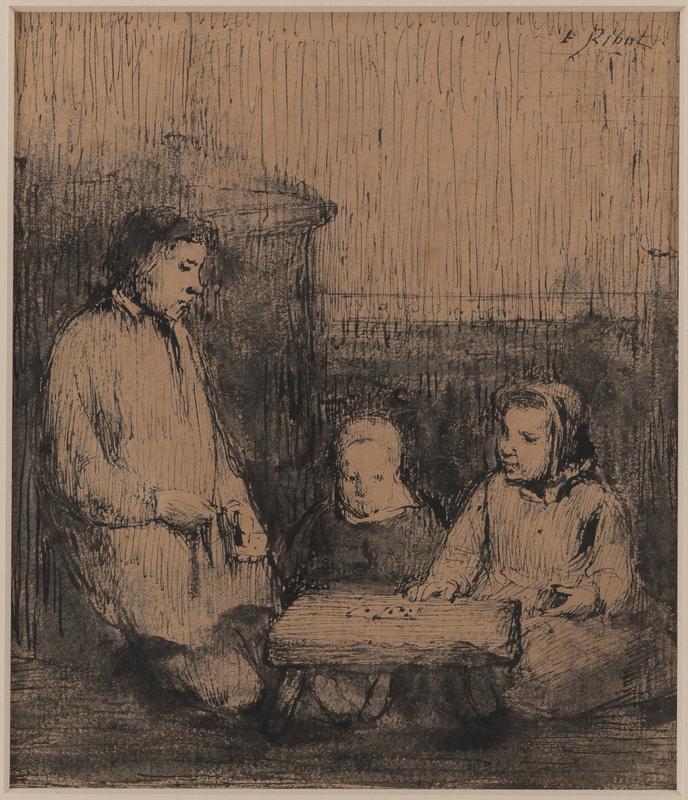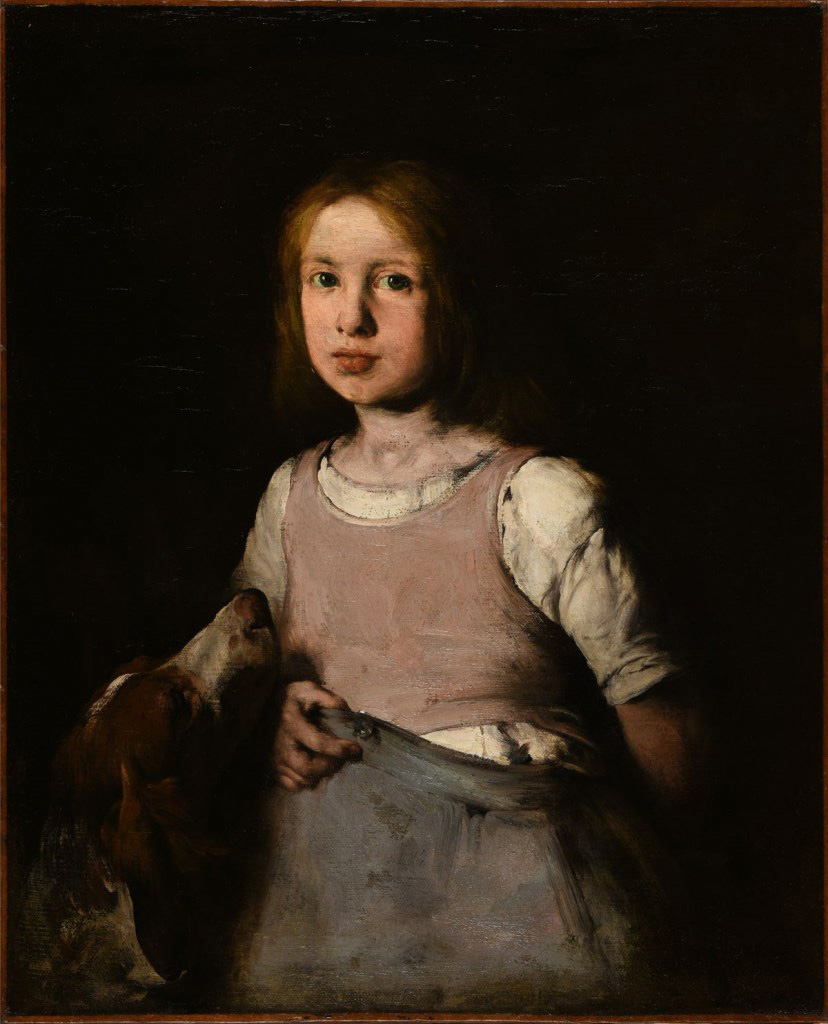
167. Théodule Ribot, Three Children Playing Cards
| Artist | Théodule Ribot, French, Saint-Nicolas-d’Attez, Haute-Normandie 1823–Colombes, Ile-de-France 1891 |
| Title, Date | Three Children Playing Cards, not dated |
| Medium | Black ink washed with gray ink on brownish paper |
| Dimensions | 6 1/2 × 5 1/2 in. (16.5 × 14 cm) |
| Inscriptions + Marks | Upper right: t. Ribot |
| Provenance | [Unidentified dealer, Haarlem, Netherlands]; to Willem and Beate Russell, Amsterdam, until 2012; their gift to Yvonne and Gabriel Weisberg, Minneapolis |
| Credit Line | Promised gift of Gabriel P. and Yvonne M.L. Weisberg, Minneapolis |

A first-generation realist, Théodule Ribot was committed to recording that most intimate aspect of everyday life: the family. Many of his paintings and drawings show children at play—singing, reading, painting. His models were most likely his own children, and by looking at a range of works, we can see them growing up.
Ribot and his wife, Marie Clémentine Germain, had five children, two of whom did not survive infancy. The children playing cards here may represent the other three: son Clément-Théodule, called Germain (born May 1845), and daughters Marie-Eugénie (born March 25, 1854) and little Désirée-Marie, called Louise (born February 3, 1857). A curiosity arises, however, because Marie-Eugénie died on March 10, 1856, so her life did not overlap with Louise’s. Perhaps her presence here is a commemoration.
Whether this drawing became the basis for a painting remains unknown. Realist hallmarks are evident in the simple setting, the plain clothing, and the wooden plank for a table. Germain and Louise (fig. 1) went on to become painters working in a vein similar to their father’s.
GPW